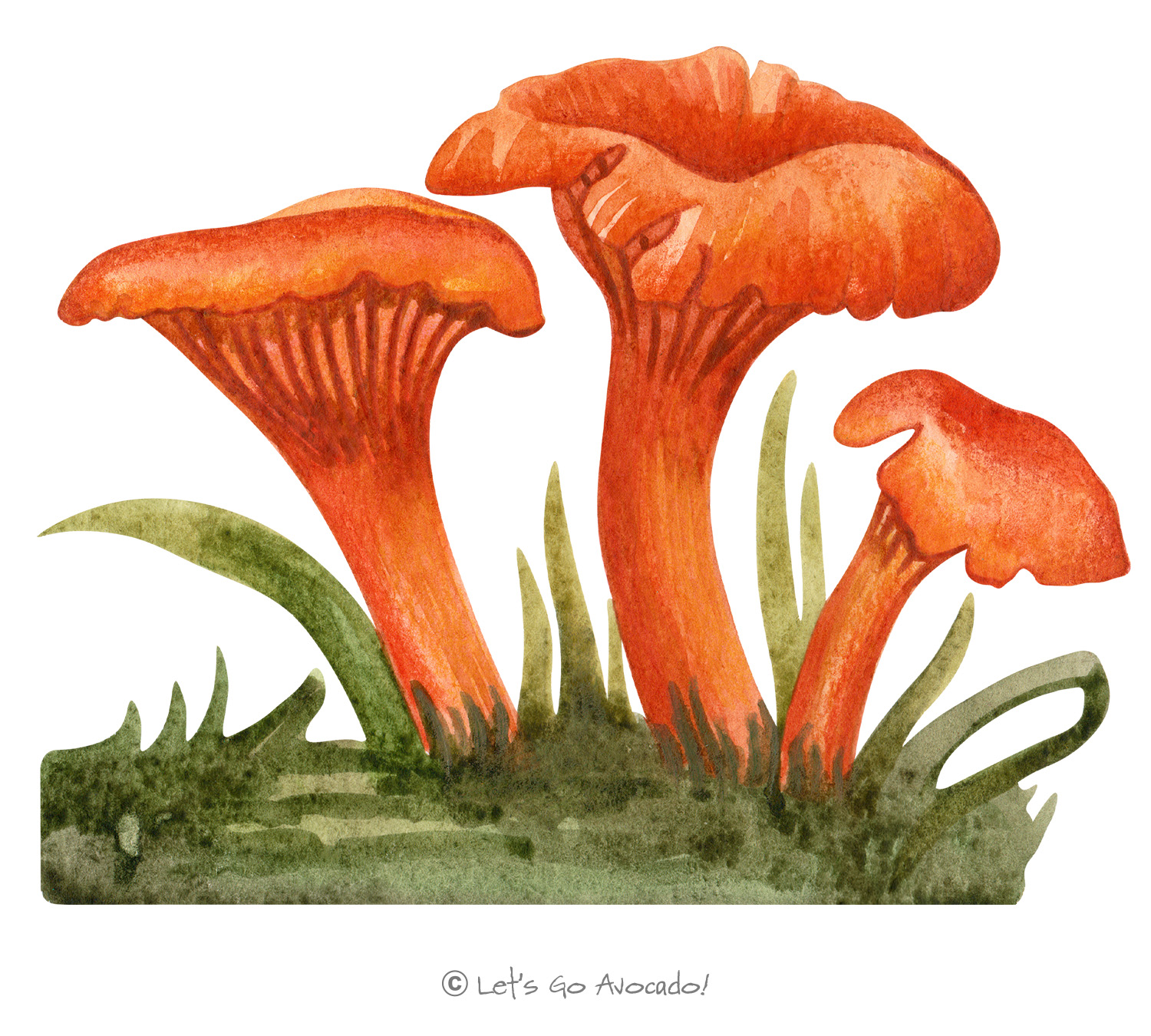

Red Chanterelle
Cinnabar Chanterelle
Cantharellus cinnabarinus
This page may contain affiliate links.
Read our disclosure and privacy policy here.
The Red Chanterelle is a captivating member of the mushroom kingdom. Known for its vibrant red-orange hues and similar appearance to the more common golden chanterelle, this mushroom stands out in the forests it calls home. It’s not only prized for its beauty but also as a culinary delight by those familiar with foraging.
Red Chanterelle
Common Name
Red Chanterelle
Other Names
Cinnabar Chanterelle
Latin Name
Cantharellus cinnabarinus
Distribution
Red Chanterelles are primarily found in eastern North America, but they can also be found in certain parts of Europe.
Appearance
The Red Chanterelle boasts a vibrant red-orange color. Its cap is somewhat funnel-shaped, and instead of true gills, it has wrinkled, vein-like ridges on the underside, similar to other chanterelles.
Size
These mushrooms generally grow to be about 2 to 5 cm in width.
Habitat
The Red Chanterelle can be found in hardwood forests, often associating with oaks. They prefer moist, well-draining soils.
Diet
Mycorrhizal; the mushroom forms symbiotic relationships with trees, where the fungi provide minerals to the tree, and in return, the tree provides sugars to the fungi.
Lifecycle
Like other fungi, Red Chanterelles reproduce via spores. The spores are released from the ridges beneath the cap and, if they land in a suitable environment, will germinate and grow. The mushroom’s myceliumMycelium is like the ‘root’ or the ‘body’ of a fungus. Just as plants have roots, fungi have mycelium. It is made up of tiny thread-like structures called hyphae that spread out in the soil or other materials where the fungus grows. Learn More forms a relationship with tree roots, which is essential for its growth and survival.
Defense Mechanisms
The vibrant color can serve as a warning to potential predators, indicating that it might not be palatable or safe to eat. However, this is a deceptive mechanism since Red Chanterelles are edible and enjoyed by many. It’s essential, as always, to ensure proper identification when foraging, as there are toxic mushrooms with a somewhat similar appearance.
Ecological Importance
As mycorrhizal fungi, Red Chanterelles play a crucial role in the health of forest ecosystemsAn ecosystem is a community of living organisms, like insects and birds, and non-living components, like water and rocks, that interact with each other in a specific area. Learn More. They help trees absorb essential minerals from the soil, enhancing tree health and growth. This mutualistic relationship benefits the forest as a whole.
ConservationThe act of protecting and preserving natural resources and the environment. Conservation efforts are important to protect beavers and their habitats. Status
They are relatively common in their natural habitat.

There’s a lot to explore right where we are, in our own neighborhoods and backyards! Join us while we get off the couch and explore the everyday wonders of nature, science, space, engineering, art, and anything else we stumble upon during on our adventures.







